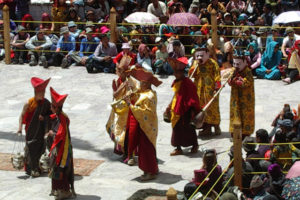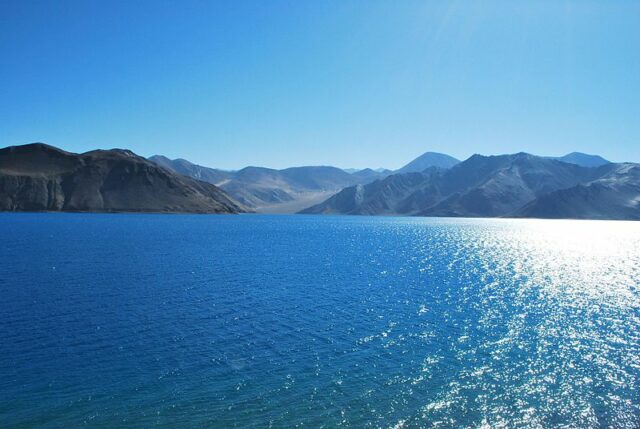While some of the peaceful societies portrayed in this website receive relatively few visitors, for others, tourists are very important. The people of Ladakh are among the latter, as numerous news stories over the years have indicated. One report in 2016 pointed out the differing attitudes toward tourism among the Ladakhi. They appreciate the positive attitudes some tourists have introduced to Ladakh such as better values about the environment, yet they recognize the negatives that visitors have introduced: smoking, drinking, and an unhealthy veneration of profits.

Another news story reported in 2019 on the ways the Ladakhi are trying to cope with the tourists in their communities—how to attract them and their money yet how to preserve their own ways in the face of challenges. They want to keep the best of their culture, of course. However, according to that report, the number of tourists visiting Ladakh declined more than 50 percent in 2019.
An article published last week by the highly respected environmental news website Mongabay – India adds an important dimension to any examination of tourism: the potential harm to the natural environment from the many visitors. That report, incidentally, points out that the number of tourists visiting Ladakh continues to climb—to 279,000 in 2019. The issue, though, is the burden on the region’s natural resources from the number of people there. The visitors double the population of Ladakh, even if they are there mostly in just the summer months.
One example cited by Mongabay of the added burden from all the tourists is their preference for flush toilets. The local farming people are satisfied to use what the reporter calls “dry toilets” while the tourists waste 7 or 8 buckets of water each day using the scarce, and precious, water available in the region. The tourists also generate a lot of garbage and plastic waste that the fragile ecosystem has to absorb somehow. One source told Mongabay that this is a particular burden since Ladakh used to generate no waste—it was a “zero waste society.”

Another expert told the reporter that the hundreds of cars driving to the incredibly scenic Pangong Lake in southeastern Ladakh every day during tourist season carry an average of four tourists, each of whom typically brings numerous single-use plastic bottles. The thousands of bottles, when empty, will be discarded thoughtlessly across the once pristine landscape. Ladakh is “loved to death’’ according to that person.
The region around Leh, the major community in the district, is similarly impacted by vast amounts of tourist-generated waste. However, little economic benefit reaches the majority of the Ladakhi people who live outside the immediate environs of Leh.
The experts contacted by Mongabay did suggest possible solutions to the many problems they discuss. Local folks would like the authorities to encourage tourists to take only reusable bottles with them when they visit the wonders of Ladakh. One person urged the authorities to get the young people more involved with waste management since they are already quite concerned about the threats to their land.
A third said that the tourists themselves should be encouraged to travel in more sustainable ways. They could reduce the carbon footprint of their journeys by exploring Ladakh on bicycles or even on foot. The important conclusions of this article could be applied to the visitors to the other peaceful societies. Or to tourists everywhere.